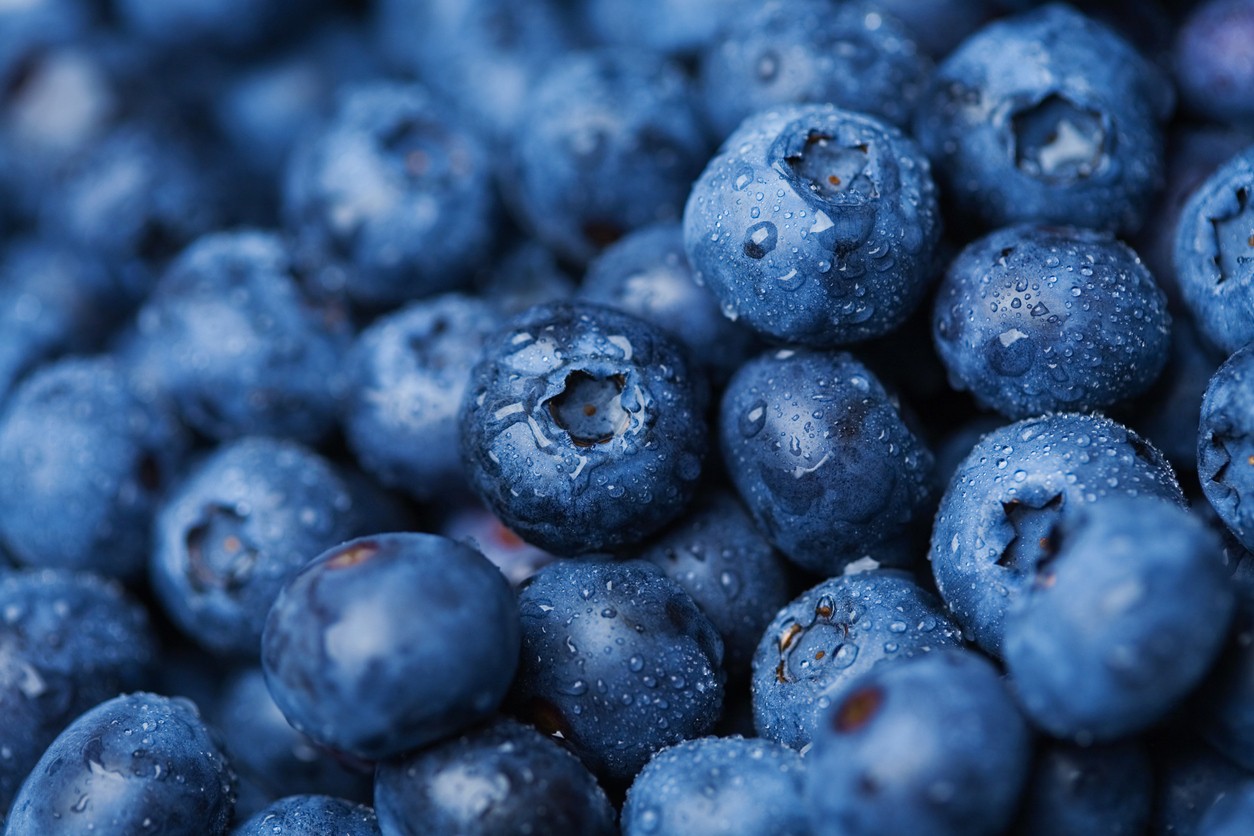This week, Oliver’s is heading down to the berry patch because it’s blueberry season! Blueberries are a relatively uncontroversial fruit: they’re sweet, they’re colorful, and they even have a fun, alliterative name. As it turns out, these humble berries are so much more than what meets the eye – they’re essentially tiny health bombs! Packed with powerful antioxidants and essential vitamins and minerals, adding more blueberries to your diet has been found to reduce the risk of heart disease, diabetes, and even cancer. In fact, a study by the Harvard School of Public and the Harvard Medical School has found that eating blueberries at least 3 times per week can significantly reduce one’s risk for heart attack regardless of when you begin adding them to your diet! Now how about THEM berries?! Put on your best berry-picking hats and grab your blueberry baskets, folks – it’s going to be a berry good time.
What’s So Great About Blueberries Anyway?
In a word, lots! At the very top of the list are antioxidants, as these are really what make blueberries the tiny health powerhouses they are. Have you ever wondered why blueberries are blue? They’re not sad (thankfully); rather, we can thank antioxidants, particularly a group of antioxidant compounds known as flavonoids. These flavonoids are credited with blueberries’ talent in cancer and heart disease prevention, but it’s a particular subset known as anthocyanins that play the biggest role. Anthocyanin can be thanked for that signature blue color in blueberries as well reds and purples in other plants, and it’s particularly effective at neutralizing cancer-causing free radicals. In fact, clinical studies of blueberry anthocyanins have found them to significantly inhibit the growth of certain cancer cells and as such may help to prevent cancer by preventing the growth of tumors in the first place.
Along with cancer and heart disease prevention, anthocyanins can be hugely beneficial to those of prone to or suffering from diabetes. In a 1993 study published in the journal “Medical and Biological Engineering and Computing”, certain anthocyanin groups were found to significantly improve insulin output relative to glucose levels, and subsequent studies have also attributed lowered fasting blood glucose levels and reduced insulin resistance to anthocyanins. This means that, while adding more blueberries to your diet is certainly not the way to cure any of these diseases, it is a great way to help prevent them!
Along with these flashy antioxidants, we can’t forget the more-humble members of the blueberry health brigade. Despite being only 84 calories for a cup, a serving of blueberries manages to contain 4 grams of fiber as well 24% of your daily recommended intake of vitamin C, 25% of your recommended Manganese, and a whopping 36% of your recommended vitamin K. They also contain iron, zinc, potassium, calcium, magnesium, and even phosphorus, all vital for maintaining overall health and wellness. Their high fiber content supports gut and colon health while also helping to keep you feeling full after meals; meanwhile, blueberries’ high levels of important vitamins and minerals support everything in your body, from your heart to your eyes, and even your skin!
Be the Best Berry You Can Be
Getting the most out of your berries means keeping them fresh long enough to get those suckers into your pie-hole… or maybe just into a pie. Regardless, proper storage ensures your blueberries will be just as delicious and packed with nutrients no matter when you decide to use them!
First off, sort your berries and discard any berries that are moldy or mushy. If your berries are somewhat overripe, DON’T throw them away – these are perfect for freezing (more on that in a minute)! While it may be tempting, try to resist washing your berries until right before you plan to eat them. Any wetness will lead to mold, and mold will destroy even the freshest of berries before you can bat an eye. If your berries come to you a little damp, dry them gently with a paper towel, then transfer them to breathable container also lined with paper towels to catch additional moisture. If you really have to wash your berries, make sure they’re completely dry before putting them away!
Remember those overripe blueberries we mentioned? These ultra-sweet morsels might be too mushy for general snacking, but their delicious flavor makes them ideal for freezing! The easiest way to freeze blueberries is too simply transfer them to an air-tight, resealable container and simply pop them in the freezer. With any other fruit, this freezing method would likely end in a solid block of frozen fruit, but not so with these blue boys. Blueberries are covered in a thin natural coating of wax known as a bloom – you may have noticed is before as a pale, waxy substance. This bloom normally helps to protect the berries from insects and microorganisms, but in freezing, it naturally prevents the berries from sticking together; unfortunately, washing will destroy this layer, so only try this with unwashed berries! If you’re looking to get the longest shelf-life possible from your frozen berries, spread your (unwashed) blueberries in a single layer on a baking sheet before throwing them in the freezer. Once they’re firm, transfer them to resealable containers or plastic bags and use them as-needed!
This week, stock-up on organic, California-grown blueberries from Forbidden Fruit for only $2.99 each, and start reaping the benefits of these incredible superfood berries today! Looking for ways to get inspired? Check out some of our favorite blueberry recipes HERE, and get creative with your bounty of berries!


No comments yet. Add the first comment